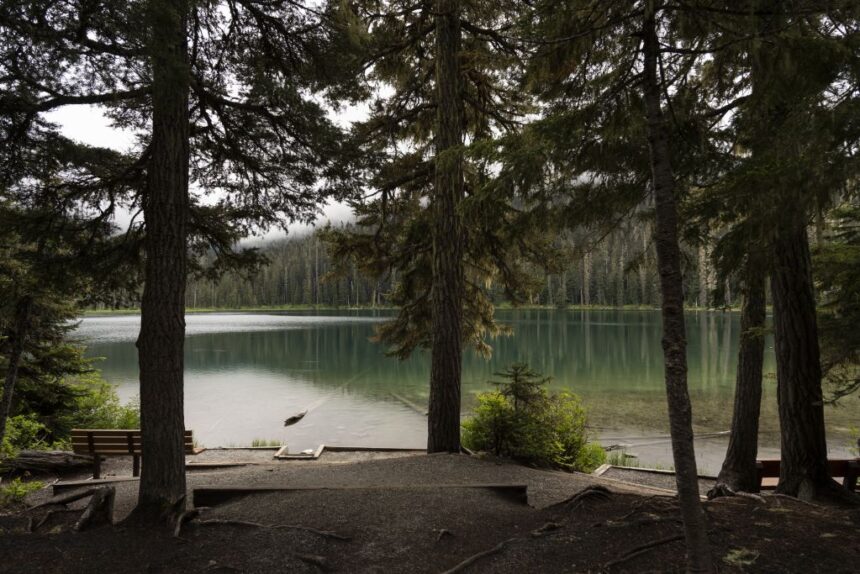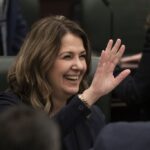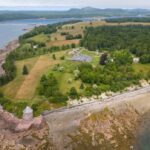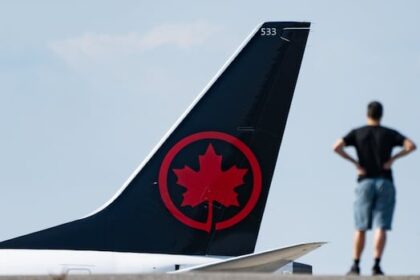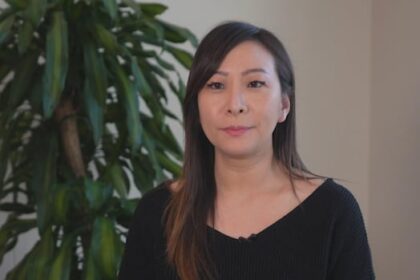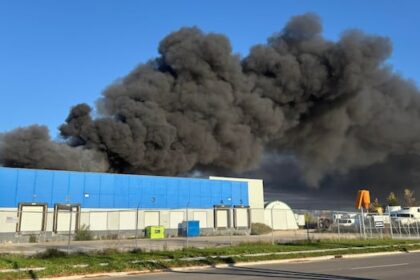For Kim Reeves, director of the Four Wheel Drive Association of British Columbia, the backcountry is more than just a place to play; it’s fundamental to life in the province. He’s spent countless days camping and exploring Crown lands, the provincially managed lands that cover 94 per cent of B.C. But he is increasingly worried that B.C.’s Declaration of the Rights of Indigenous Peoples Act (DRIPA) could limit his access to those lands. “We used to have a map,” he says. “We knew we could access that territory and how to access [it], but metaphorically, the map is changing, and we don’t know where it’s going.” Since the implementation of the Declaration of the Rights of Indigenous Peoples Act in 2019, B.C. First Nations are increasingly exercising their rights and working collaboratively with the province on co-management of issues in their territories — a shift that has prompted backlash from some non-Indigenous British Columbians concerned that their rights will be sidelined and their democratic voice undermined. The Haida Title Act in 2024, which recognized Haida territorial rights, has been framed by some critics as a threat to private property ownership. On the Sunshine Coast, a dock management plan has been developed by the provincial government in consultation with the shíshálh Nation, which has alarmed some Pender Harbour residents. Temporary closures of provincial parks for First Nations harvesting and cultural activities has also sparked concern from some non-Indigenous visitors. At the core of much of public concerns over the declaration act is the fate of Crown land. What we call Crown land is also First Nations land that, in most of B.C., was never ceded under treaties; as Indigenous Rights are recognized in these areas, some non-Indigenous British Columbians are grappling with uncertainty about what it all means for them. “Does Crown land exist underneath Aboriginal Title? Or is it the other way around?” Reeves asks. The Haida Title Act recognized Haida title over their territories, a landmark legal decision that has been viewed by some non-Indigenous Canadians as cause for alarm. Photo: Josiah Fennell / The Narwhal Reeves isn’t the only one with these questions. According to an Angus Reid poll published in late August, 44 per cent of British Columbians believe that the declaration act “goes too far in limiting provincial authority over land and resources.” Thirty-nine per cent of people think the legislation is necessary, but opposition is growing. Louise Pedersen, executive director of the Outdoor Recreation Council of BC, has seen this growth firsthand. For her, the key moment was the B.C. government’s 2024 proposed Land Act amendment, which would have given Indigenous communities a voice in Crown land use decisions. Many outdoor recreation groups learned about the planned amendment in a news story. They were worried about the implications of the changes and angry because they felt they hadn’t been adequately consulted. “It was a case study in how not to communicate when you’re talking about complicated issues,” she says, lamenting both the government’s approach and a narrative that pitted reconciliation against outdoor recreation. “It’s a shame that the public debate is being framed around access versus Indigenous Rights.” Vocal proponents of ‘public land’ have deep ties to mining, resource extraction During the Land Act debate, think tanks, politicians and commentators pushed the framing of conflict between the interests of First Nations and everyone else. Now, a new organization called the Public Land Use Society has taken up the mantle. The Public Land Use Society is focused on eight “public land conflicts,” all involving Indigenous land management. Among them are Joffre Lakes and a portion of Juan de Fuca Provincial Parks, the 2025 Squamish Nation Agreement, the shíshálh Foundation Agreement and the Haida Lands Agreement. Founded in the spring of 2025, the society claims to be fighting for public access to Crown lands, but not everyone is convinced. Torrance Coste, associate director at the Wilderness Committee, believes that groups like the Public Land Use Society are exploiting public concern. “There is a genuine public interest around land access,” he says. “But it’s being torqued and taken advantage of by industries like mining and logging.” One of the problems with groups like the Public Land Use Society, he explains, is they’re focused on restricted uses for First Nations rather than industries, which impact public land access on a much larger scale. Of 934 Crown land use applications currently listed on B.C.’s online database, only five are labelled as First Nations. There are 81 labelled as industrial and over 250 associated with agriculture, energy production and other commercial land uses. It’s something that Louise Pedersen also mentioned. “Historically, some of the biggest threats to outdoor recreation have been industrial development,” she explains. “It’s been large-scale logging, large-scale mining operations and urbanization.” Three out of four of the society’s directors either currently or have previously worked in B.C.’s mining industry. Jonas Rigaux is a self-described “mineral exploration contractor and independent prospector.” His company, Tamarack Exploration, has worked on mining, oil and gas and construction projects across the province. Adam Pankratz, who writes a regular column in the National Post, also serves on the board of Vancouver mining company Rokmaster Resources. Commenting on the Declaration Act back in January, he argued that Indigenous consultation on mining claims “could spell the end of [B.C.’s] mining sector”. There’s nothing in the article, or his other writing, about recreation. Temporary closures in Pipi7íyekw, also known as Joffre Lakes Park, have allowed members of the Líl̓wat (Lil’wat) and N’Quatqua nations to reconnect with their traditional territory. Photo: Paige Taylor White / The Narwhal The society’s executive director, Warren Mirko, worked with Rokmaster from 2015 to 2023 according to his LinkedIn profile. A consultant “supporting diverse clients in media and public relations,” Mirko initially agreed to be interviewed for this story. He changed his mind after learning the piece was for The Narwhal. “We’re letting our published articles and statements speak to our perspectives on these issues,” he wrote in an email. For Coste, groups like the Public Land Use Society are a manufactured response to the real threat that recognition of First Nations rights — such as the right to free, prior and informed consent — presents to resource extraction in B.C.“[With the Declaration on the Rights of Indigenous People Act] lots of nations are going to continue to reach out to those industries and make deals that work better for them, as any community would,” he explains. “But some are going to say ‘No, this forest, this part of our territory, that’s not going to get logged, that’s not going to get mined,’ and that’s not in resource extraction companies’ interests.” That’s something that the Public Land Use Society’s fourth director, political commentator, Caroline Elliott, also has concerns about. In 2023, she wrote that the seasonal, temporary closures of Joffre Lakes Provincial Park could set a precedent that would create new hurdles for the natural resource sector. “If this standard had been applied, for example, to the Site C project, it would never have been built,” she wrote. That piece doesn’t mention hikers, campers or backcountry users. Reeves, who met with the Public Land Use Society earlier this year, doesn’t see the close ties between the society and the mining industry as an issue. “I don’t need to agree with everything anybody does,” he says. “[They] are asking fundamental questions that I’ve been asking and not getting answers to, questions about where we’re going with Crown land.” Government believes Declaration Act offers alternative to court battles For Spencer Chandra Herbert, B.C.’s Minister of Indigenous Relations and Reconciliation, the Declaration Act offers a different path for answering those questions. “I’d rather work with local First Nations, local business, local sports and recreation groups, city councils and town councils together to get to an agreement where we can all identify our interests and needs, as opposed to going through the courts,” he explains. Chandra Herbert points to the Haida Lands Agreement as an example of this approach.“We made an agreement with the Haida around the protection of private property while also acknowledging their long-time title, occupation and use and enjoyment of Haida Gwaii,” he says. “Instead of the courts, we sat down together and hammered out a deal.” Pedersen thinks the outdoor recreation community should also focus on collaboration. “There’s already some great initiatives on the ground where recreation groups are forming relationships with First Nations in their area,” she says. Some members of the outdoor recreation community worry that increasing recognition of Indigenous Rights on Crown land could curtail access to nature, while others say this shift is creating new relationships and collaborations. Photo: Alia Youssef / The Narwhal For Thomas Schoen, such initiatives are his life’s work. The chief executive officer of First Journey Trails and director of trails and parks development with the Indigenous Youth Mountain Bike Program, Schoen disagrees with the idea that the Declaration Act represents a threat to outdoor recreation. “It is an absolute myth that the backcountry will be closed,” he says. “It’s not what we see happening in the province.” Schoen and his team have collaborated with dozens of Indigenous communities across B.C. to develop trails and promote outdoor recreation. He points to examples like the Simpcw Mountain Bike trails project, which extends for over 300 kilometres across Simpcwúl̓ecw (Simpcw territory) from Barrière to McBride, just north of Kamloops. “We’ve built a really thriving mountain bike–specific trail network that is now drawing riders from across B.C.,” he says. Schoen sees the Declaration Act as an opportunity for recreation and reconciliation. But, he adds, it requires recreation groups to do some work. “Whenever I talk to any recreational user group, I tell them, if you haven’t started developing a partnership with local Indigenous communities, you are already behind the eight ball,” he says. To Reeves, this is an imposing task — one he thinks the provincial government needs to help with.“It used to be that the recreation groups would work with our local recreation officer to facilitate conversations with First Nations; that’s been removed,” he explains, arguing that recreation officers have stopped playing this role.Instead, Reeves explains, “we’re told to build relationships with First Nations, but the government has 150 years of experience, and industry has the same amount. [I’m] Joe Public Advocate, a volunteer, and with 200 nations provincially, what chance do I have?” Organizations like First Journey Trails and the Indigenous Youth Mountain Bike Program have collaborated with First Nations across B.C. to create new mountain biking trails. Photo: Alia Youssef / The Narwhal Schoen acknowledges the challenge. Indigenous communities and recreation groups can have different priorities. His experience has taught him that trials are nice-to-haves, while many Indigenous nations are dealing with more urgent and immediate needs. But he thinks that if recreation groups show up respectfully, they can discover shared values, something Pedersen agrees with. “Recreation people care very deeply about land, water and access; they want to make sure that all those things remain healthy for the future,” she says. “Indigenous nations share those same values.” Reeves agrees, saying for members of the Four Wheel Drive Association, “the feeling of being in the backcountry, it’s all spiritual words.” “It’s grounding, it’s revitalizing, it’s refreshing to the spirit,” he says. That’s also why the stakes feel so high, and why he’s so frustrated with how the government has been moving the Declaration Act forward. A lack of transparency breeds mistrust, according to outdoor recreation advocates “There’s uncertainty with a lack of transparency,” Reeves says. “That breeds a lack of trust.” The most commonly cited example of this lack of transparency is what’s happening in Pender Harbour, a small community in the province’s Sunshine Coast region. In 2018, B.C. signed a land management agreement with the shíshálh Nation. Among the topics covered were new dock management regulations. The Pender Harbour and Area Residents Association has argued that the changes were undemocratic for dock and boathouse owners, rallying support from community members. Earlier this year, the B.C. government rolled back some of the changes. But the Pender Harbour association hasn’t stopped there: they are going ahead with a B.C. Supreme Court challenge filed in September 2024, arguing the Declaration Act is unconstitutional. The Pender Harbour and Area Residents Association, an “aligned group” with the Public Land Use Society, initially expressed interest in speaking to The Narwhal. They changed their minds two days after the society declined to be interviewed, explaining that they reviewed our questions with “directors and advisors” and determined “these topics have already been addressed publicly through previous media coverage and our own statements.” Although Coste disagrees with Reeves and the Pender Harbour association when it comes to the Declaration Act, he does agree that the government is dropping the ball on transparency and public engagement. “The burden to get the non-Indigenous public comfortable with what reconciliation looks like from a land-use perspective falls squarely on government,” he says. “I absolutely would agree with the assessment that they’re failing.” While Chandra Herbert disagrees with this characterization, he acknowledges that “we can’t move forward unless we bring the public along with us, and I think we’ve got to do more work on that.” We were very clear about our commitment to that with the Union of BC Municipalities, we signed an agreement that’s, you know, with the organization that represents all the town councils and regional districts and cities to ensure that we can bring people in earlier in the process, so that their interests are reflected in what agreements we make. As evidence that his government is doing that work, he pointed to a recent agreement signed with the Union of BC Municipalities for broad-based consultation in October, prompted by concerns over amending the Heritage Conservation Act to increase Indigenous involvement in archeological preservation.“We signed an agreement with the organization that represents all the town councils, regional districts and cities to ensure that we can bring people in earlier in the process,” he says.Reeves remains skeptical. “I think the public feels like, not only have decisions been made, but the direction has already been set long before public consultation is managed,” he says. “It’s like we’re being managed rather than being consulted.”
Does recognition of Indigenous Rights threaten access to nature and recreation in B.C.?
